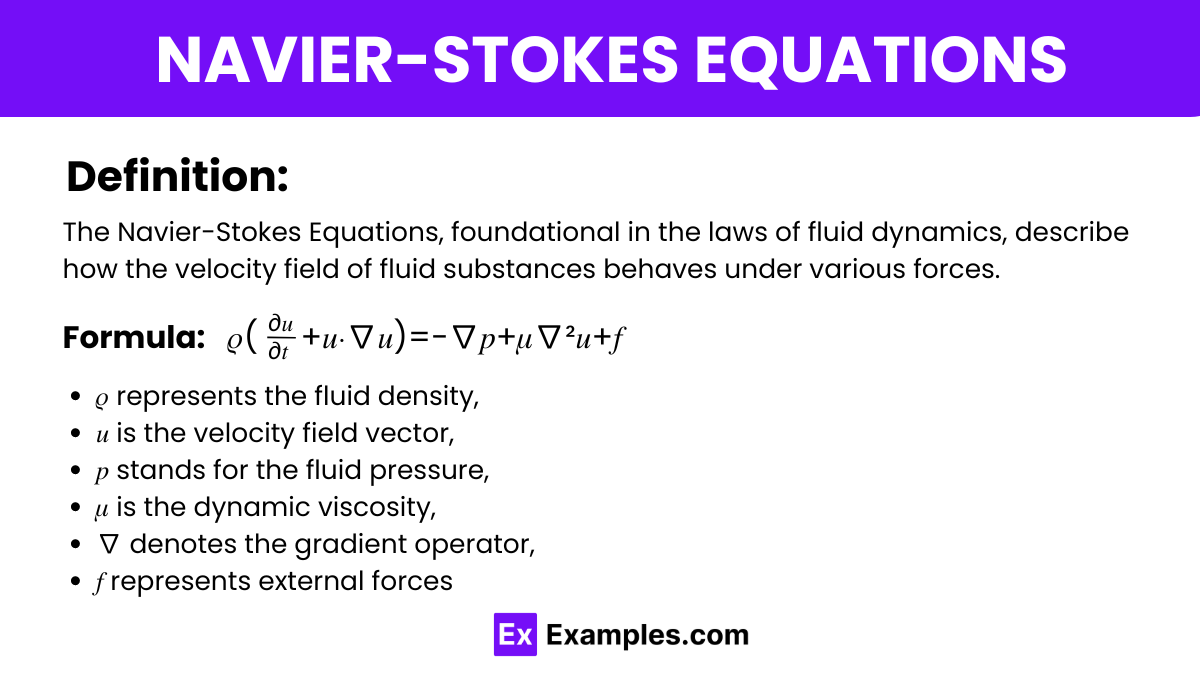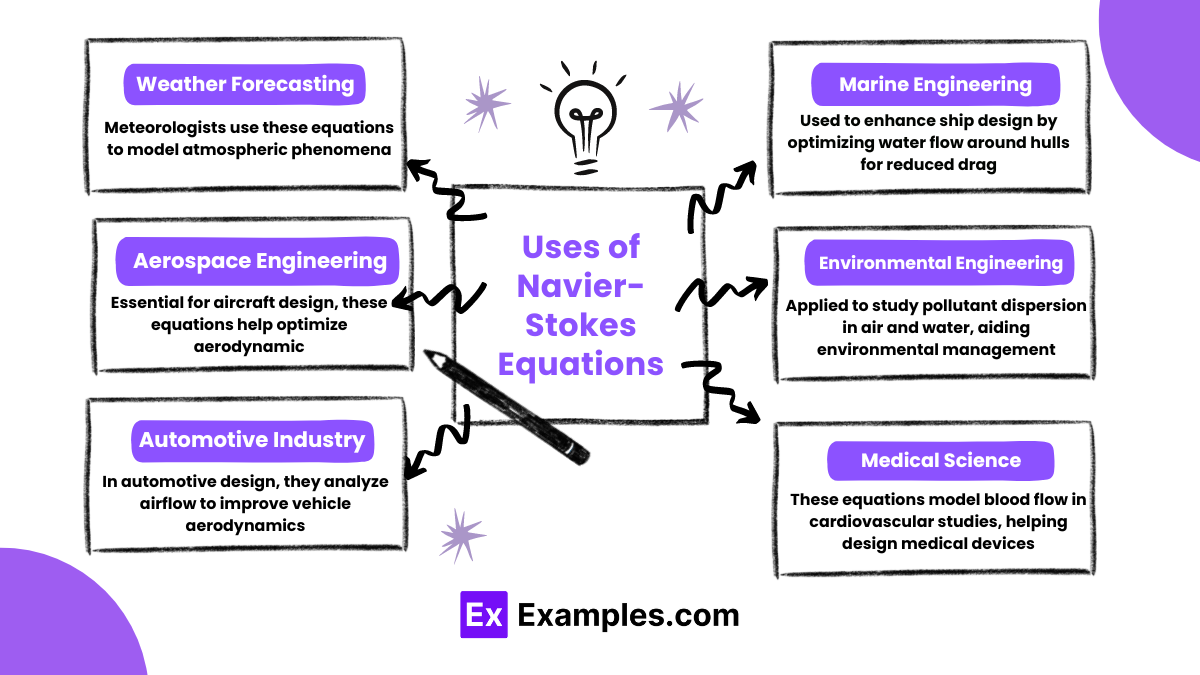What are the Navier-Stokes equations primarily used to describe?
Quantum mechanics
Fluid dynamics
Electromagnetic fields
Thermodynamics


The Navier-Stokes Equations, foundational in the laws of fluid dynamics, describe how the velocity field of fluid substances behaves under various forces. These equations integrate principles of physics to model the motion of fluids, accounting for viscosity, pressure, and external forces like gravity. Consequently, they are essential for predicting weather patterns, designing aircraft, and understanding ocean currents, providing a comprehensive mathematical framework for analyzing fluid flow in both natural and engineered systems.
SS
The Navier-Stokes equations are expressed in their simplest form as:
This formula captures the balance of forces acting on fluid elements and is essential for modeling fluid flow dynamics in various physical contexts.
Deriving the Navier-Stokes equations in a conceptual and non-mathematical way involves integrating fundamental physics principles that govern fluid motion. Here’s a simplified overview of the process:
The derivation starts with Newton’s second law of motion, which states that the force acting on an object is equal to the mass of the object multiplied by its acceleration. In the context of fluids, this principle is applied not to a single particle, but to a small volume of fluid, known as a fluid element.
Fluid properties such as density and viscosity are essential. Density relates to the mass per unit volume of the fluid, and viscosity measures the fluid’s resistance to gradual deformation by shear stress or tensile stress.
The forces acting on a fluid element include:
Combining these concepts, the Navier-Stokes equations are formed to describe the momentum conservation in fluid dynamics. They mathematically articulate how the velocity of the fluid changes in response to pressure, viscous, and external forces, under the constraint of mass conservation.

The Navier-Stokes Equations are crucial for understanding fluid dynamics across various fields:
The Navier-Stokes Equations are fundamental in various practical applications across multiple fields, showcasing their versatility and critical importance:
The Navier-Stokes equations typically consist of three momentum equations (one for each spatial dimension) and one continuity equation, making four in total.
The full solutions for the Navier-Stokes equations in three dimensions under all conditions have not been solved yet; it remains one of the seven Millennium Prize Problems.
Yes, the Navier-Stokes equation is considered extremely challenging due to its complexity and the nonlinearity in three-dimensional space, posing significant mathematical and computational difficulties.
Text prompt
Add Tone
10 Examples of Public speaking
20 Examples of Gas lighting
What are the Navier-Stokes equations primarily used to describe?
Quantum mechanics
Fluid dynamics
Electromagnetic fields
Thermodynamics
Which term in the Navier-Stokes equations represents the viscous forces?
Pressure gradient term
Convective term
Viscous term
External force term
In the incompressible Navier-Stokes equations, what condition is applied to the velocity field u?
∇⋅u = 0
∇⋅u = ρ
∇⋅u = p
∇⋅u = T
Which assumption is not made in the derivation of the incompressible Navier-Stokes equations?
Constant density
Negligible viscosity
Newtonian fluid
Conservation of momentum
Which of the following is a common simplification applied to the Navier-Stokes equations for certain fluid flow problems?
Bernoulli's equation
Euler's equation
Fourier's equation
Laplace's equation
Which parameter is defined as the ratio of inertial forces to viscous forces in a fluid flow?
Reynolds number
Mach number
Froude number
Prandtl number
What does the continuity equation ∇⋅u = 0 imply for an incompressible fluid?
Conservation of energy
Conservation of mass
Conservation of momentum
Conservation of pressure
Which form of the Navier-Stokes equations is used to describe the flow of incompressible, inviscid fluids?
Euler's equations
Bernoulli's equation
Stokes' equations
Laplace's equation
Which of the following is not a boundary condition typically applied to the Navier-Stokes equations?
No-slip condition
Free-slip condition
Periodic boundary condition
Constant pressure condition
What does the term ∇p represent in the Navier-Stokes equations?
Pressure gradient force
Viscous force
Inertial force
Gravitational force
Before you leave, take our quick quiz to enhance your learning!

